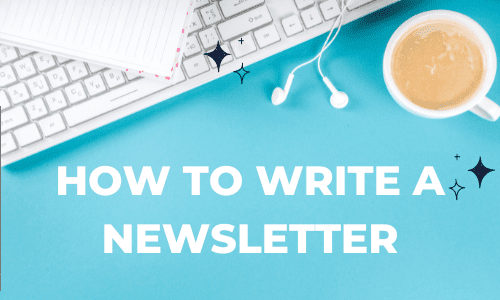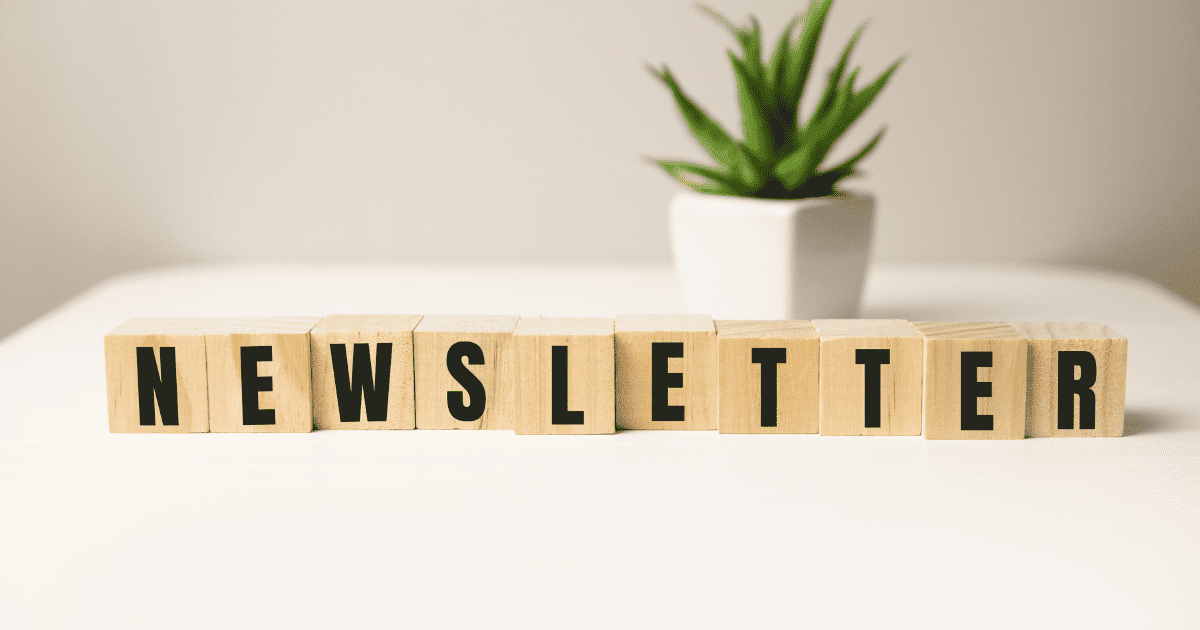Newsletter writing is a great way to keep in touch with your audience, whatever business or service you’re in.
They can update your readers on what’s going on, share recent work, or connect with them on a personal level.
They don’t have to be long or complicated – in fact, simple is better! There are a few things to keep in mind to make your newsletter effective.
In this blog post, we’ll discuss effective newsletter writing with 9 helpful tips, including what content to include and how often to send it out.
We’ll also share some tips for making your newsletters look good and capture your audience’s attention. So, if you want to improve your current strategy or are just starting out with newsletters, read on!

What are newsletters?
A newsletter is a great way to stay informed. But what is a newsletter? A newsletter is a publication that is usually sent out monthly or quarterly.
Nowadays, more and more people are opting for digital newsletters.
Email newsletters
Email newsletters are periodic emails that are sent to subscribers who have opted in to receive them. They can include a variety of content, such as news, articles, and product announcements.
The content can be original, or you can curate it from other sources.
Email newsletters are a great way to stay up to date on your favorite topics, and they’re also a great way to promote your website or blog!
The purpose of an email newsletter is to keep subscribers informed and build a relationship with them so they are more likely to become customers or clients in the future.
Email newsletters provide an opportunity for you to collect leads by requiring subscribers to input their email addresses in order to receive the newsletter.
There are great tips in this video.
Are newsletters effective?
Businesses should not ignore their newsletters. They are an important marketing tool for successful companies and will remain so for years.
Newsletters help people stay up-to-date with industry news and insights. They provide valuable information for customers which can lead them to buy from you!
Of course, not everyone opens the newsletters they receive (including me!) Here is an example I received this week from a local animal shelter.
I must admit I opened it only out of curiosity because I was writing about newsletters!
So, newsletters can be effective if they stand out, provide valuable content, and don’t get deleted.
How do you write newsletters that get opened and even saved?
What are newsletter features?
Newsletters come in all shapes and sizes but share common features. Many newsletters include a masthead, with the name of the publication, the date, and the issue number.
Most also include an editor’s note, which can provide an overview of the content or share important information with readers.
Other features include articles, interviews, letters to the editor, and advertisements. Some have editorials, reviews, and opinion pieces.
Most newsletters have a combination of these elements, while the specific content of each newsletter varies depending on its audience and purpose.
In terms of design- newsletters have a simple format, with text and images arranged in an easy-to-read layout.
9 Tips for effective newsletter writing
Newsletters are a great way to keep your customers, employees, or members updated on what’s going on with your company or organization. But if you’ve never written one before, it can be daunting to know where to start. Here are 7 tips on how to write a good newsletter:
1. Have a plan
First, you need to keep in mind your target audience. Who are you trying to reach and what are they interested in? Plan your newsletter around this information.
Newsletter lengths vary- think about how long you want yours to be. When you know the amount of space you have, you can plan the format and content.
What type of newsletter do you want to write? Are you going to be sharing information about your business or industry? Do you want to focus on a specific topic to interest readers?
Once you know the purpose of your newsletter, it will be easier to come up with interesting content that is geared toward your audience. More information here!

2. Choose a tone
Deciding on the tone of voice for your newsletter is an important step in the creation process.
Consider the purpose of your newsletter. Are you trying to inform or entertain your readers? After considering these factors, you”ll have a better idea of what tone is right for your newsletter.
If you’re sharing news and updates, a more formal tone may be right. If you focus your newsletter on promoting interaction and community involvement, a more casual tone is better.
The tone you choose should reflect the overall goal of your newsletter.
3. Keep it focused
Choose topics you want to cover and write about them in each newsletter. This will make the content more engaging for your readers.
Keep the newsletter writing itself focused by using brief paragraphs and clear language.
In the age of internet attention spans, it’s important to get to the point. Be clear and concise in your writing, and use bullet points or numbers to highlight key points.
4. Make your newsletter visually appealing
It is more likely to be read if the newsletter has images. You can also add videos or other interactive elements such as quizzes, to your newsletters.
These features help break up the text and draw the reader in.
Having a creative and eye-catching design, with brand-matching logos, colors, and typography (if applicable) is also important.
Don’t skimp on using appealing design principles in your layout. The more your newsletter stands out, the more likely they will read it!

Have a simple structure in your newsletters
It’s important to have a good flow in a newsletter. A cohesive and flowing design can make for a better reading experience, which will help you generate interest in what’s inside!
To create a following for your newsletter, it’s important to have a structure so readers know what to expect.
Just as a regular newspaper has certain sections/ columns, a newsletter should have some defined sections. These should be consistent with every publication.
Of course, this depends on your business and the purpose of your newsletter.
Here are some examples of possible sections:
- Job listings
- Industry updates
- Quote of the Day
- Photo of the week
- Person of the week
- Book review
- Product recommendation
- Opinion piece
6) Choose a template
The best way to create a newsletter that is professional and consistent is to choose a template and stick with it. This will help you create a cohesive look for your newsletter that your readers will appreciate.
It will also make it easier for you to create your newsletter since there will be a set format to follow. Plus, it can save you time in the long run!
Have a catchy name for your newsletter and choose catchy subject headings to grab attention.
Here is a list of some common newsletter names:
- Broadcast
- Chronicle
- Digest
- For The Record
- Inside Look
- Latest
- Magazine
- Memo
- Playbook
- Report
- Updates
- Voice
- Weekly
- Wrap-up
7. Make it personal
The beauty of a newsletter is that it can be tailored to your subscribers’ interests and behaviors. This personalization increases the chance of success and makes for better engagement with those who receive them!
Be personal. Try to personalize your messages by using the recipient’s name, etc. Share your own stories!
Don’t be too zealous. You want to concentrate on educating, informing, and building trust with your audience more than making constant sales pitches.
While it’s ok to have a call to action in your newsletter, it’s better to have a more personal approach.

8. Consistent frequency
Frequency is important with newsletters. At a minimum, a good goal is once per month.
The frequency you decide on might depend on your ability to create engaging content in a specific time frame.
It’s important to be consistent and clear with your readers about when they can expect an additional issue. If possible, plan to publish at the same day and time.
Consistency is the key although the frequency of your newsletters may depend on your business.
9. Link items in the newsletter
Making your newsletter great is all about connecting the dots. You want to make sure that you’re not just throwing random pieces of information together without an underlying thread or else readers might lose interest.
Your newsletter will be something that subscribers look forward to if you can achieve this balance and produce good content!

Newsletters help you stay in touch with customers and let them know about new products, offers, or events.
They are also an effective way to increase brand awareness and loyalty. Customers appreciate newsletters because they can stay informed without having to search for information.
Newsletters should be well-structured with interesting content that will capture the reader’s attention. Images and videos are a great way to add visual interest to your newsletter.
